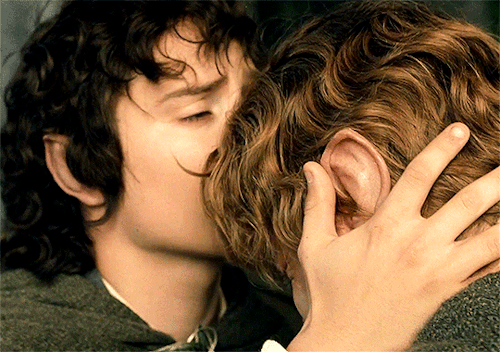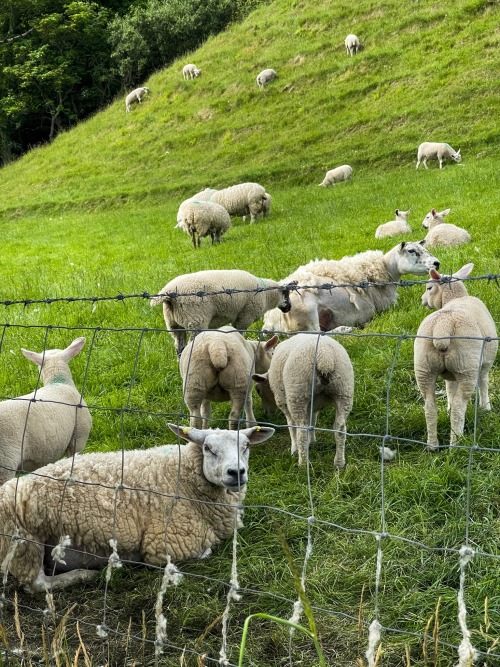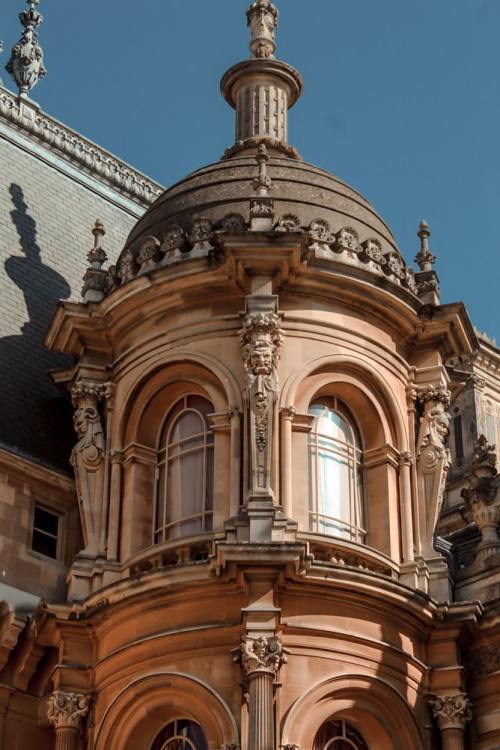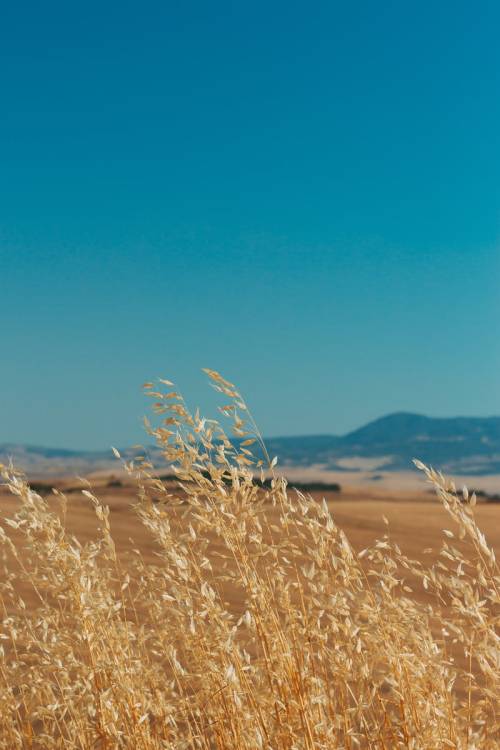Displays Of Physical Affection In The Lord Of The Rings (2001—2003)










Displays of physical affection in The Lord of the Rings (2001—2003)
More Posts from Honeywheats and Others
Spell shells!

My coven sisters and I went to a ritual honoring the Goddess Nehalennia yesterday and were asked to bring a small offering. So I decided to try something new: spell shells!

What you need:
🐚 a shell
🐚 herbs and stones
🐚 soy- or beeswax candle
🐚 greaseproof paper

What you do:
- take you shell and place it on the greaseproof paper, hollow side up
- put in your herbs and stones
- melt and poor in your wax
- let cool
And that’s it! You have a cute little pocket spell that you can take with you or leave somewhere as an offering. You can even decorate your shell with runes or sigils to add a bit more magick! 🌙
Quick weather spell
Throw powdered cinnamon out of the window for sunshine and to make rain stop

The god Lugh was worshiped in Ireland as a deity of the sun. This connection with the sun may explain his name (it means “shining one”), and it also may account for the attributes that he displayed: he was handsome, perpetually youthful, and had a tremendous energy and vitality. This energy manifests itself especially in the number of skills he had, according to legend, mastered. In fact, there was a tale that related Lugh’s myriad abilities at arts and crafts.
As told in the Battle of Magh Tuiredh, the god traveled to Tara, and arrived during a tremendous feast for the royal court. Lugh was greeted at the door by the keeper of the gate, and was immediately asked what talent he had - for it was a tradition there that only those who had a special or unique ability could enter the palace. The god offered his reply: “I am a wright”. In response, the gate keeper said: “We already have a wright. Your services are not needed here”. Still, Lugh, not to be so easily dismissed, continued: “I am a smith”. Again, the guard retorted that the court had a smith that was quite adequate; but the god was not to be dissuaded. In short order, he noted that he was also a champion, a harper, a hero, a poet, an historian, a sorcerer, and a craftsman. To this list, the gate keeper merely nodded his head, and stated matter of factly that all of these various trades were represented in the court by other members of the Tuatha de Danaan. “Ah, but you do have an individual who possesses all of these skills simultaneously?”, was Lugh’s clever and inspired reply. The guard was forced to admit his defeat, and so Lugh was allowed to enter and join the festivities.
According to Celtic mythology, Lugh was the son of Cian and Ethlinn. After the god Nuada was killed in the Second Battle of Magh Tuiredh, Lugh became the leader of the Tuatha De Danaan (the term for the gods and goddesses who descended from the goddess Danu).
Glögg: an ancient drink!🍷

✒️Hello everyone! Today I bring you a bit of European history and gastronomy, focusing on an ancient Scandinavian drink called "Glögg", which I had the pleasure to taste last night. Sources can be find at the end in APA formar!
What is Glögg?
Glögg or glogg (Danish: gløgg, Norwegian: gløgg, Swedish: glögg, Icelandic: glögg, Faroese: gløgg, Finnish: glögi, Estonian: glögi) is a spiced, usually alcoholic, mulled wine or spirit. It is a traditional Nordic drink that has been drunk since ancient times during the cold winters, and later, to celebrate Christmas.
Nowadays many people drink this drink at "Christmas", the Christian celebration, however, we know very well that it was an appropriation of pagan festivities.

In the Nordic countries, drinking mulled wine is a tradition that dates back to the 16th century. It was drunk especially by messengers and postmen who travelled on horseback or skis in cold weather.

How the Nordic countries gave us Christmas:
Long before Christianity had come to the Nordic regions, the pagans and other ancient Germanic peoples would celebrate the winter solstice each December, the time of year when the days were the shortest and the night's the longest. Friends and relatives would get together and enjoy food and drink in a festival known as Yule.
As Christianity swept across Germanic Europe centuries ago, many Yuletide traditions were adopted and absorbed into the Christian faith, mixing together to create the modern Christmas we celebrate today.
Source: UK History blog.

Traditional Swedish Glögg recipe:
You can find the recipe right here!🍷🍂

Sources:
How the Vikings gave us Christmas. (n.d.). Sky HISTORY TV Channel. Retrieved September 2, 2021, from https://www.history.co.uk/articles/how-the-vikings-gave-us-christmasWikipedia contributors. (2021, July 31). Glögg.
Wikipedia. https://en.m.wikipedia.org/wiki/Gl%C3%B6gg
-
 angelundermoon liked this · 6 days ago
angelundermoon liked this · 6 days ago -
 babyandhisbabycakess liked this · 6 days ago
babyandhisbabycakess liked this · 6 days ago -
 wistfulblazeandwanderlust reblogged this · 6 days ago
wistfulblazeandwanderlust reblogged this · 6 days ago -
 wistfulblazeandwanderlust liked this · 6 days ago
wistfulblazeandwanderlust liked this · 6 days ago -
 themusicisyou25 reblogged this · 6 days ago
themusicisyou25 reblogged this · 6 days ago -
 themusicisyou25 liked this · 6 days ago
themusicisyou25 liked this · 6 days ago -
 whobloidlostingublerland reblogged this · 6 days ago
whobloidlostingublerland reblogged this · 6 days ago -
 whobloidlostingublerland liked this · 6 days ago
whobloidlostingublerland liked this · 6 days ago -
 queen-scottie reblogged this · 6 days ago
queen-scottie reblogged this · 6 days ago -
 queen-scottie liked this · 6 days ago
queen-scottie liked this · 6 days ago -
 shark-l0v3r liked this · 1 week ago
shark-l0v3r liked this · 1 week ago -
 cake-and-umbrellas liked this · 1 week ago
cake-and-umbrellas liked this · 1 week ago -
 mace-waz-here liked this · 1 week ago
mace-waz-here liked this · 1 week ago -
 just-one-more-fandom reblogged this · 1 week ago
just-one-more-fandom reblogged this · 1 week ago -
 ichbinplatzeins-ya liked this · 1 week ago
ichbinplatzeins-ya liked this · 1 week ago -
 percythejedi reblogged this · 1 week ago
percythejedi reblogged this · 1 week ago -
 percythejedi liked this · 1 week ago
percythejedi liked this · 1 week ago -
 tuckboroughdays liked this · 1 week ago
tuckboroughdays liked this · 1 week ago -
 galactic-magick reblogged this · 1 week ago
galactic-magick reblogged this · 1 week ago -
 midnighttrashthoughts liked this · 2 weeks ago
midnighttrashthoughts liked this · 2 weeks ago -
 brick3621 reblogged this · 3 weeks ago
brick3621 reblogged this · 3 weeks ago -
 brick3621 liked this · 1 month ago
brick3621 liked this · 1 month ago -
 applejackramblings reblogged this · 1 month ago
applejackramblings reblogged this · 1 month ago -
 moriquendii reblogged this · 3 months ago
moriquendii reblogged this · 3 months ago -
 tolkien-bout-doctor reblogged this · 3 months ago
tolkien-bout-doctor reblogged this · 3 months ago -
 moriquendii reblogged this · 3 months ago
moriquendii reblogged this · 3 months ago -
 sugarcube-stillabookworm liked this · 3 months ago
sugarcube-stillabookworm liked this · 3 months ago -
 moriquendii liked this · 3 months ago
moriquendii liked this · 3 months ago -
 mgmkid reblogged this · 4 months ago
mgmkid reblogged this · 4 months ago -
 robinzero22 liked this · 4 months ago
robinzero22 liked this · 4 months ago -
 sublime-is-the-silence liked this · 4 months ago
sublime-is-the-silence liked this · 4 months ago -
 transeliot reblogged this · 4 months ago
transeliot reblogged this · 4 months ago -
 ghosts-and-blue-sweaters liked this · 5 months ago
ghosts-and-blue-sweaters liked this · 5 months ago -
 wish-i-had-robin-wings reblogged this · 5 months ago
wish-i-had-robin-wings reblogged this · 5 months ago -
 faceofboetiesarecool reblogged this · 5 months ago
faceofboetiesarecool reblogged this · 5 months ago -
 elecktrum reblogged this · 5 months ago
elecktrum reblogged this · 5 months ago -
 kirathaune liked this · 5 months ago
kirathaune liked this · 5 months ago -
 kinasecrystal liked this · 5 months ago
kinasecrystal liked this · 5 months ago -
 bluerosele liked this · 5 months ago
bluerosele liked this · 5 months ago -
 contortionyx reblogged this · 5 months ago
contortionyx reblogged this · 5 months ago -
 contortionyx liked this · 5 months ago
contortionyx liked this · 5 months ago -
 fixatedonwriting liked this · 5 months ago
fixatedonwriting liked this · 5 months ago -
 jonairadreaming liked this · 5 months ago
jonairadreaming liked this · 5 months ago -
 eightopals reblogged this · 5 months ago
eightopals reblogged this · 5 months ago -
 eightopals liked this · 5 months ago
eightopals liked this · 5 months ago

Raia. 20 years old. Gaelic Polytheist & Lugh Devotee.
74 posts











